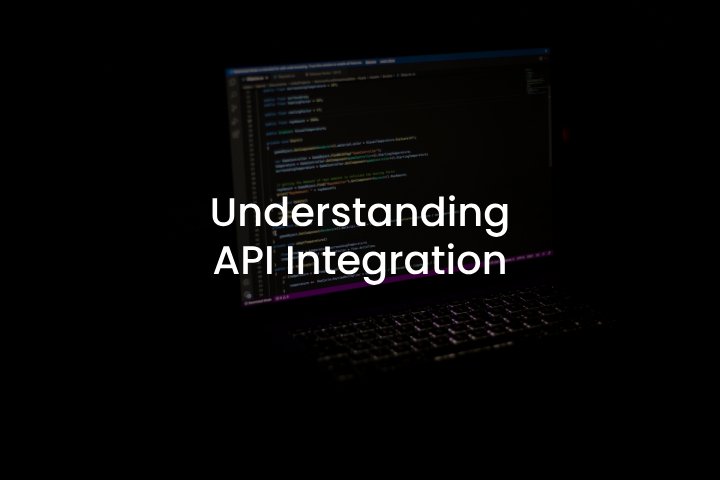
A Beginner’s Guide to Understanding API Integration
Application Programming Interface (API) is viewed as an important instrument that brings together different applications and allows them to communicate by sharing data. Whether you are building a mobile app, a website, etc., understanding how APIs work is a must if you want to create better, more powerful, and functional applications.
In the article, we will analyze APIs and their role in software development, how they work, and break the API integration process into stages for you to see how easy it is.
The Role of APIs and How They Work in Software Development
Since APIs work as connectors between various platforms or tools, they have a lot of benefits to offer. Firstly, they are extremely efficient. Instead of building everything from scratch, APIs allow developers to use functionality from other applications multiple times, hence, saving a lot of time and resources. For example, you can integrate an API from an existing service instead of creating your own payment system.
Secondly, with the help of APIs, developers can combine different services into one like building a Lego set using different bricks. This can lead to the creation of new applications with broader functionality. For example, many existing apps combine maps, payment systems, and others.
Next, modern applications are normally set to scale up as they expand, and APIs help it scale more easily. They can handle substantial amounts of data and traffic, making it easier for your system to grow without slowing down or failing.
Finally, APIs are perfect if you want to accelerate the time to market of your product since, with their help, developers can combine pre-built solutions, resulting in quicker software release.
When an API is used, it typically follows a simple process:
- Request: A client application (e.g., a web browser or mobile app) sends an HTTP request to an API server. This request tells the server what action to take, like sending data or creating a new resource.
- Processing: The API server processes the request, which may involve pulling data from a database or performing an action.
- Response: After processing, the server sends an HTTP response back to the client with the requested data or confirmation that the action has been completed.
What Are the Main Types of APIs?
The main types we generally come across include
- Public APIs: These are open to anyone and allow third-party developers to use a service like Google Maps or Twitter’s API.
- Private APIs: These are used within an organization and allow different internal systems or teams to communicate with each other, but they are not available to people outside your organization.
- Partner APIs: These are shared between businesses, usually for specific purposes. For example, a retailer might use a payment processor’s partner API to handle transactions.
- Composite APIs: These allow multiple services or data sources to be accessed through a single API call. They are useful when different endpoints or systems need to be queried together. Instead of making several separate requests to different parts of a system, you can send just one request. This single request then makes the necessary calls behind the scenes and brings back a single, combined response. Composite APIs can be private, public, or partner depending on what type of access is granted by the organization.
How to Perform an API Integration?
At first, integrating an API into your project might seem challenging, but breaking it down into steps makes it simpler to implement and manage. The steps we recommend are as follows:
- 1. Choose the Proper API: The first step is finding an API that can meet your needs. Look for one that has the functionality you need, is reliable, and has good documentation. It might also be helpful to consider factors like pricing, rate limits, support options, and community feedback when choosing an API.
- 2. Get API Keys: Most APIs require authentication to prevent misuse. You will need to sign up with the API provider and get an API key or token that grants you access. It is also important to consider API security, such as storing keys securely and using environment variables instead of hardcoding keys in the code.
- 3. Understand the Documentation: API documentation is your guide to using the API properly. It explains how to make requests, what data you need to send, and how the API will respond. Take time to read and understand it. It is helpful to check for any examples, troubleshooting tips, and API version information in the documentation.
- 4. Pick Your Integration Method: There are different ways to integrate an API. The choice of method depends on the project size, your team’s expertise, and whether you need features like traffic management or security:
- Direct Integration: This is where you write your own code to make HTTP requests to the API. This method is flexible and gives you full control over the integration. It is common for smaller projects or where stricter control is needed.
- API Clients and Libraries: If you do not want to write everything from scratch, there are pre-built libraries for making API calls. These libraries can speed up development and reduce the need to write boilerplate code for handling API requests and responses.
- API Gateways: These act as intermediaries between your app and the API, helping with things like authentication, security, and traffic management.
- 5. Make API Calls: After you pick a method, send requests to the API. You will need to include any necessary data and your API key to authenticate the request.
- 6. Process Responses: Once the API responds, you will need to handle the data it sends back. This might involve extracting specific information and displaying it in your app.
- 7. Error Management: APIs can fail or return unexpected results. It is important to plan for this by setting up error handling in your app, so it can easily recover from any issues occurring.
- 8. Focus on Security: API security is important. Make sure to use HTTPS for encrypted communication, keep your API keys secure, and validate any user input to prevent attacks.
Conclusion
APIs can be easily viewed as one of the most crucial components of modern application development. With APIs, developers utilize existing services and combine them to create more powerful and functional applications with a lengthy list of useful features existing today.
By understanding how APIs work and following best practices for integration, you can save time and easily scale your app based on the required changes. With the right team and the right tools, integrating APIs into your projects can be a rather straightforward process that opens many doors for future applications and their functionality.


